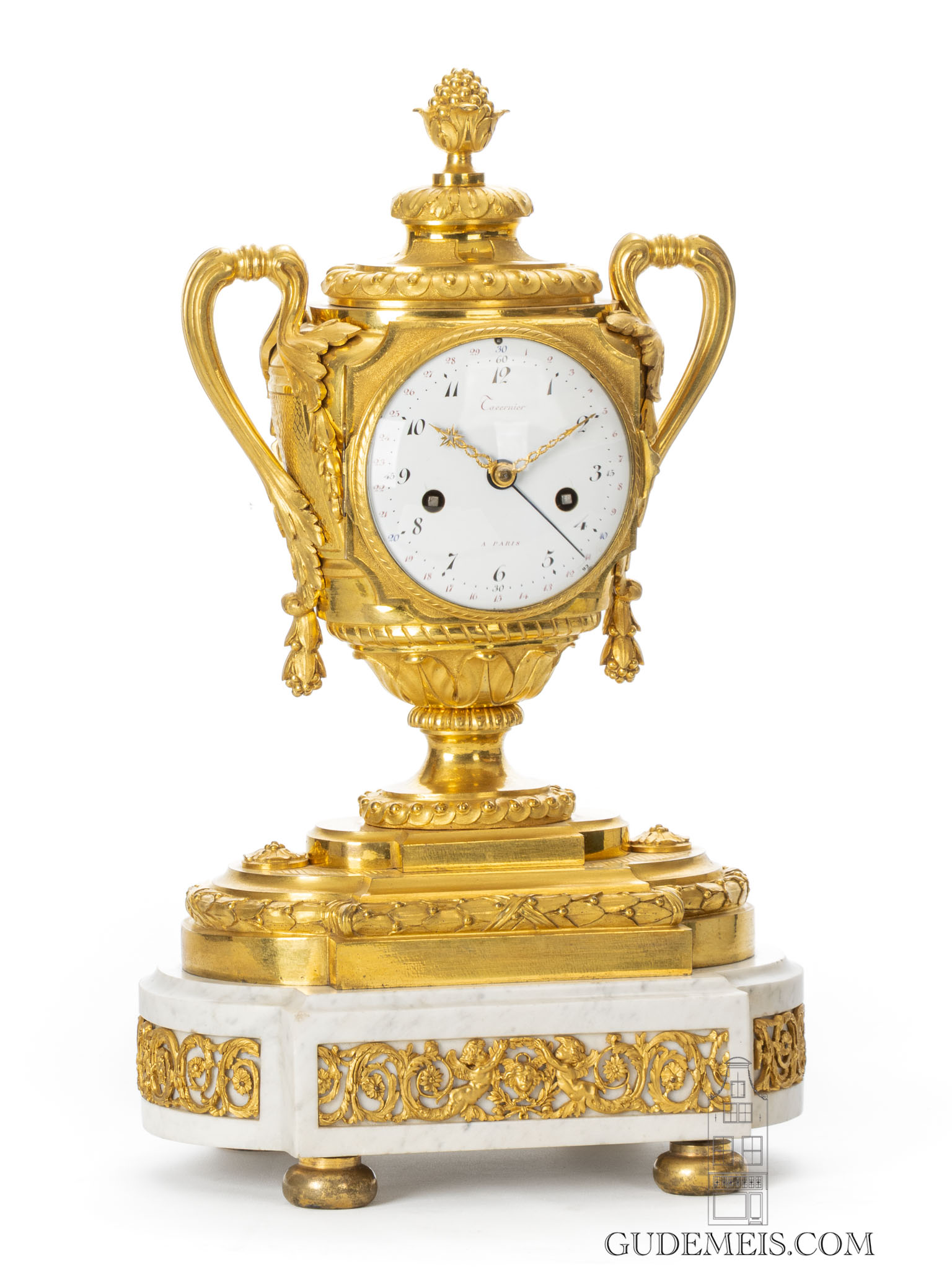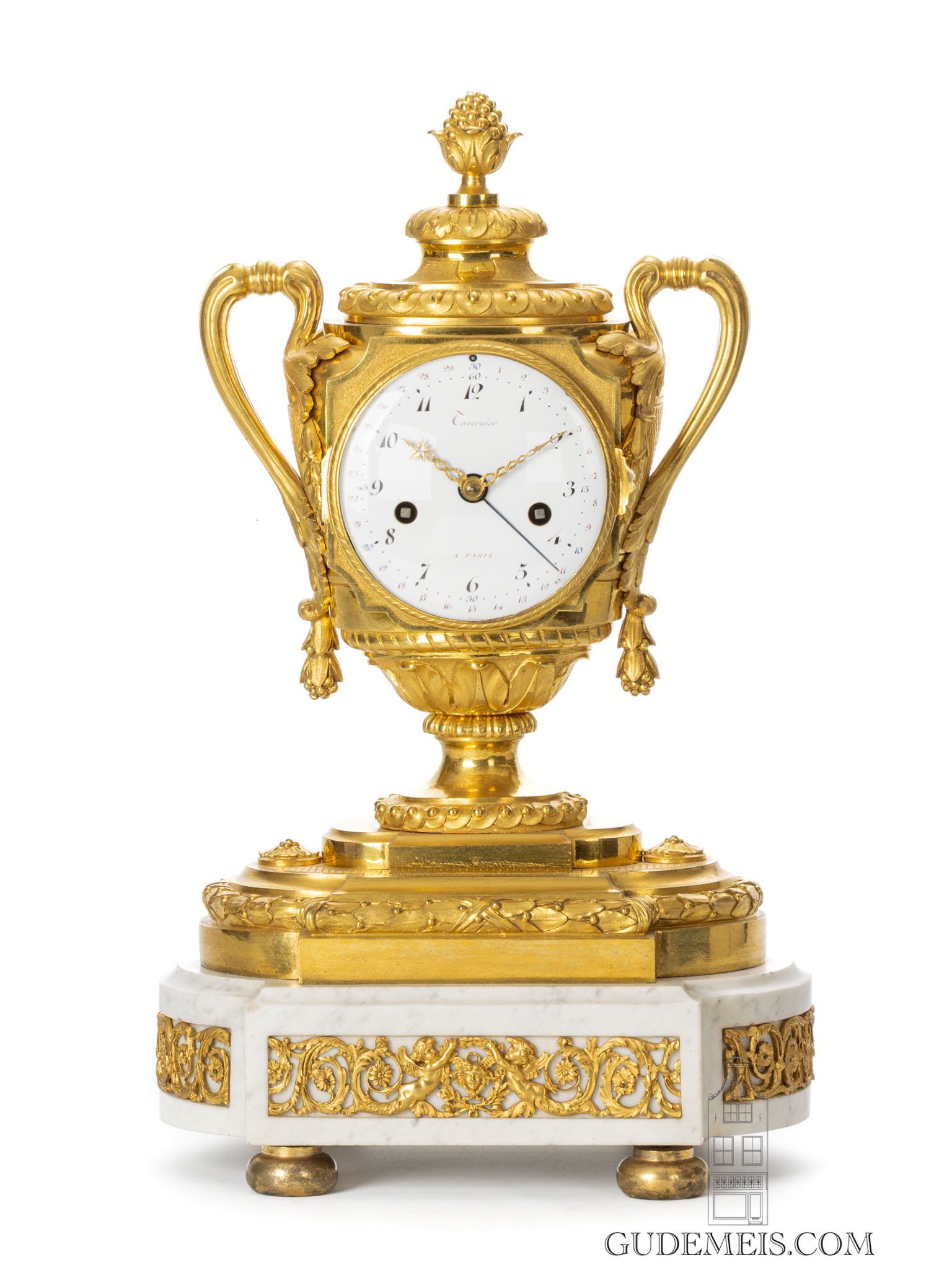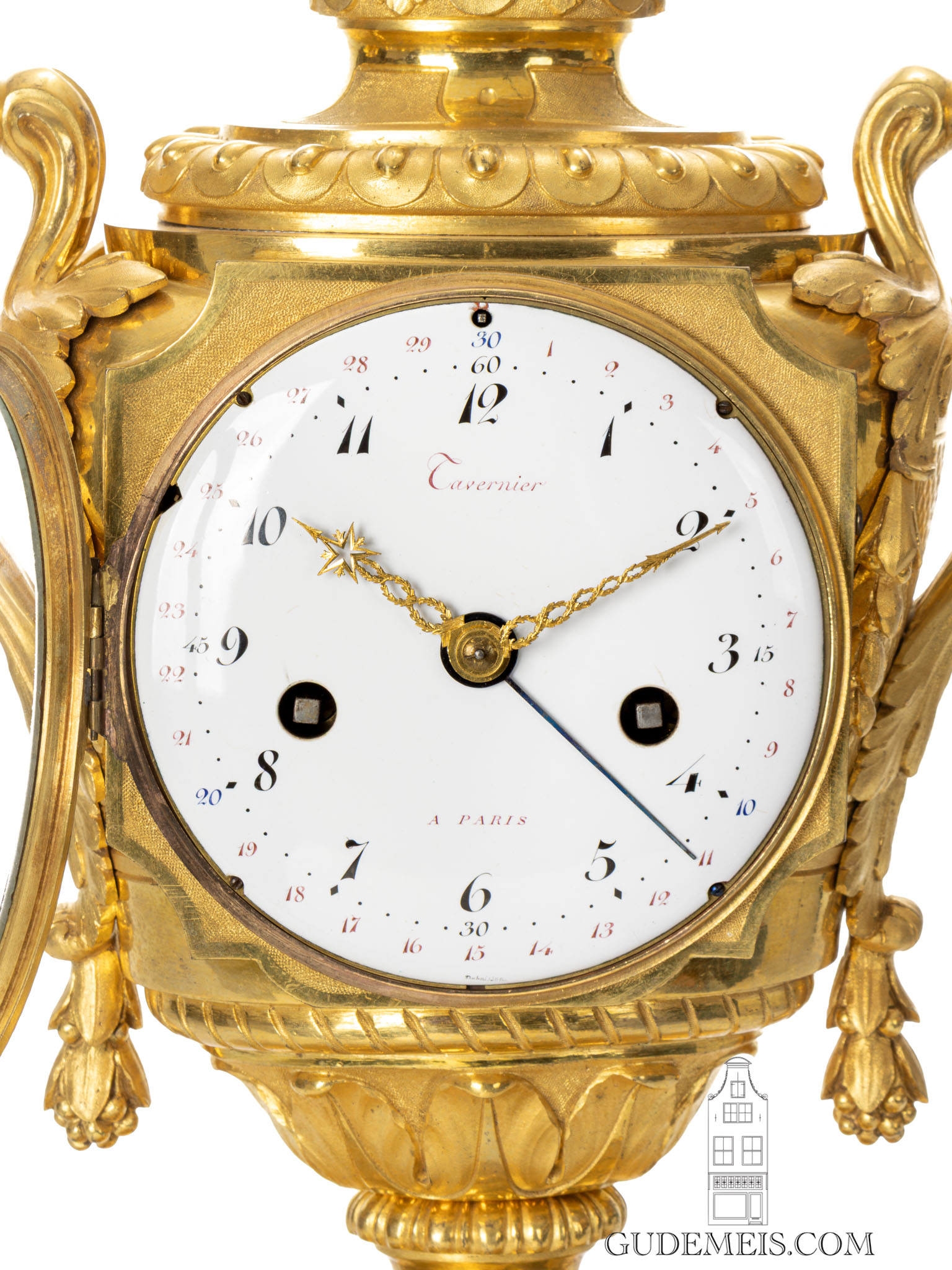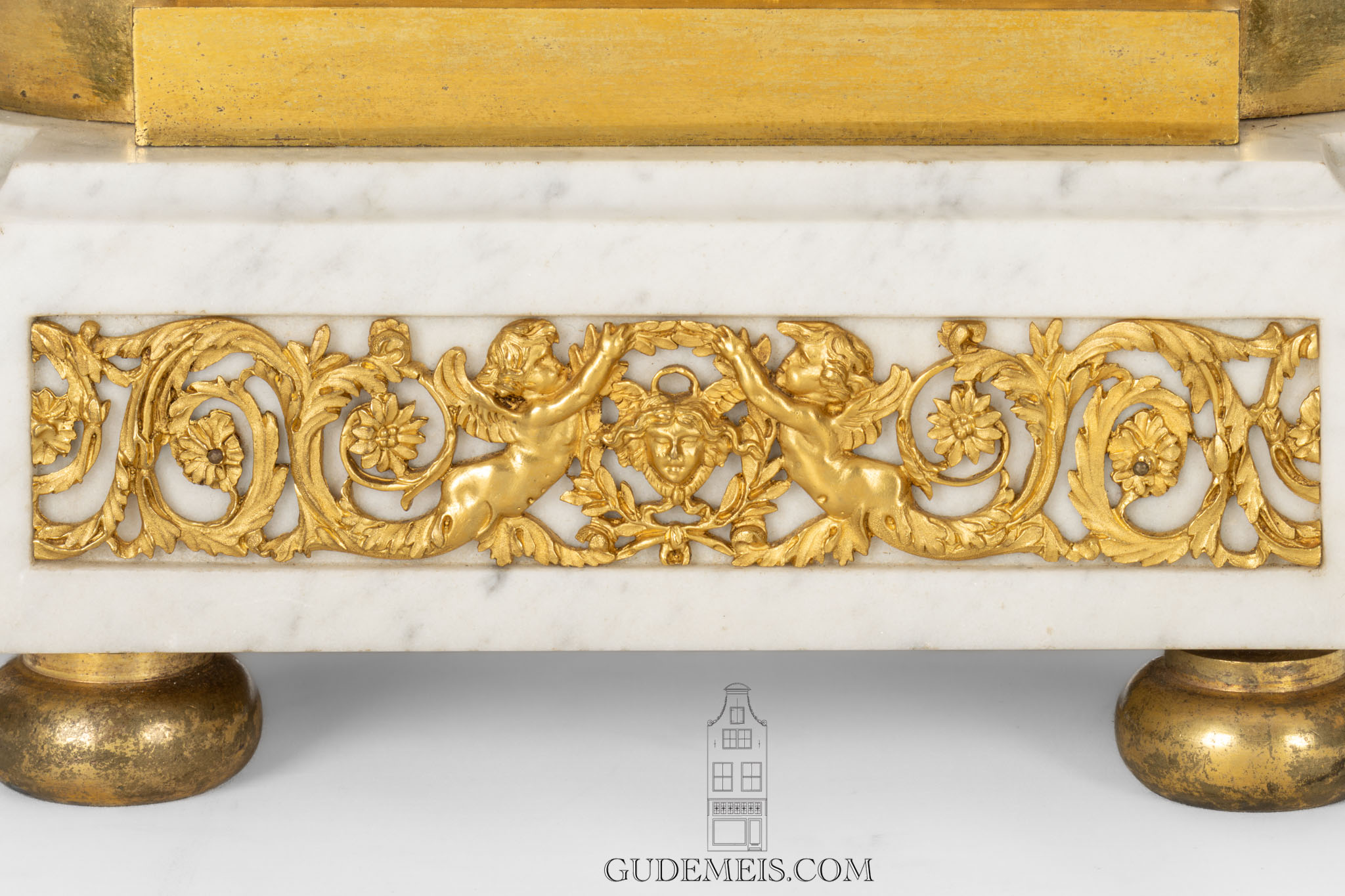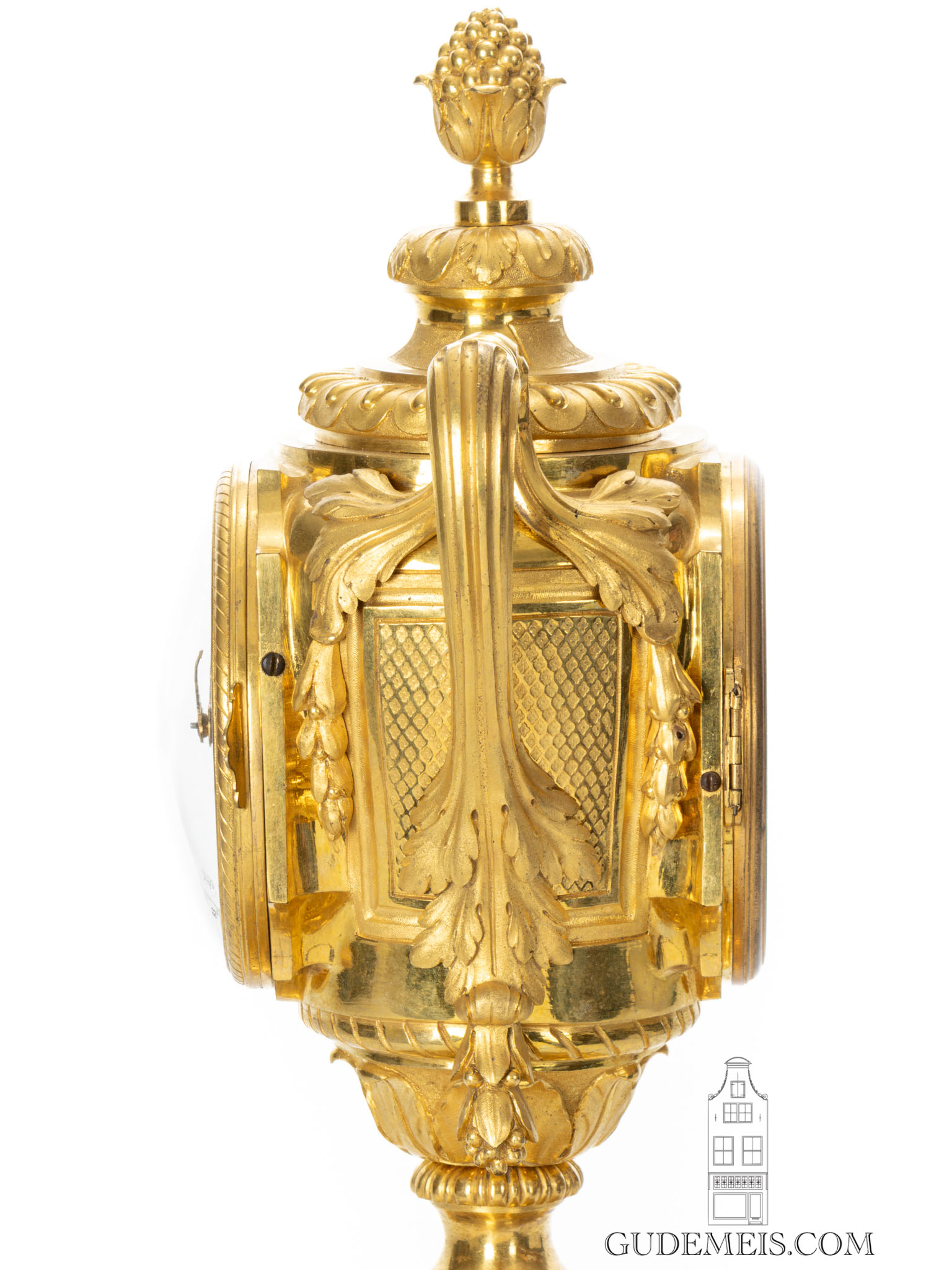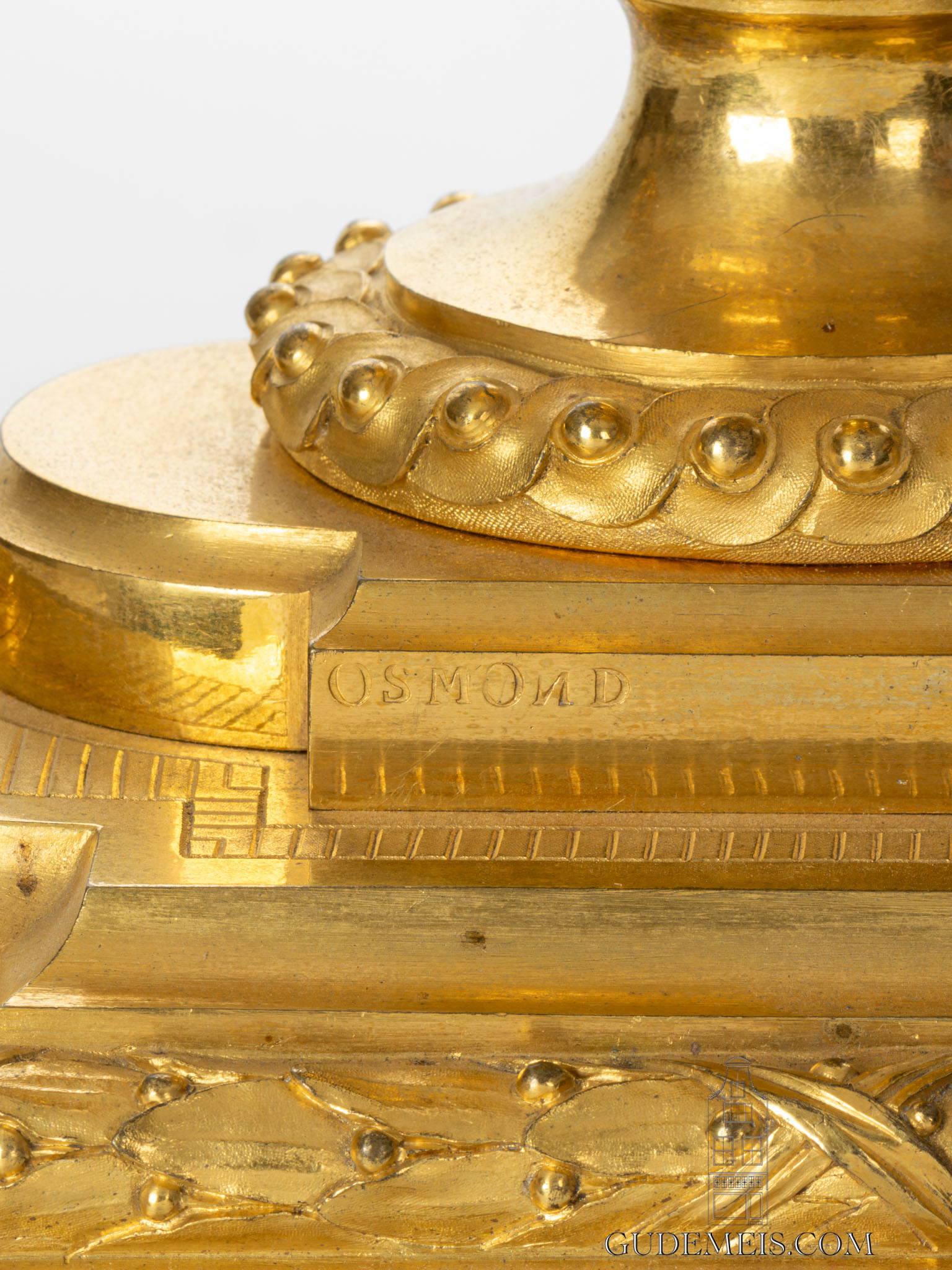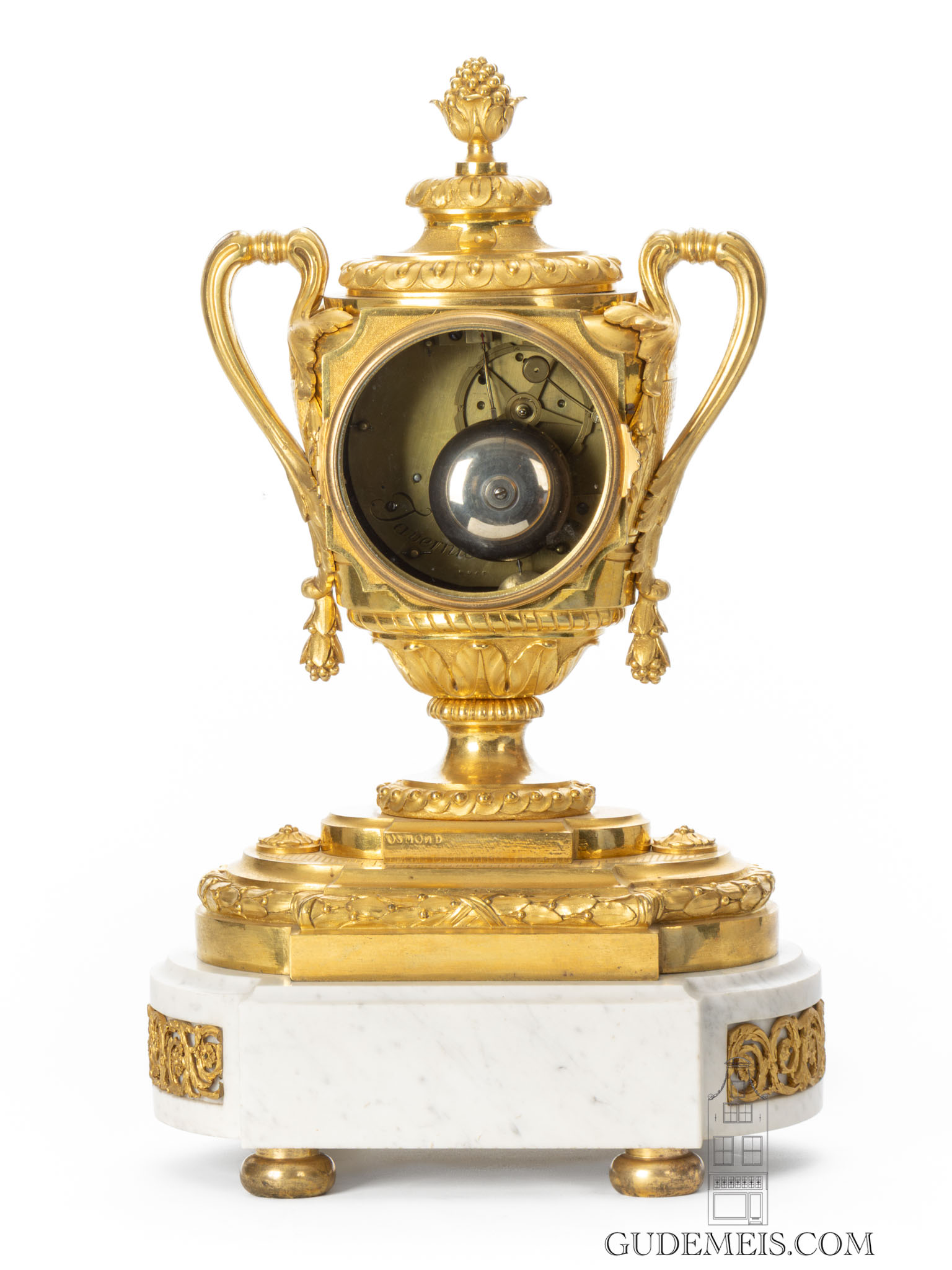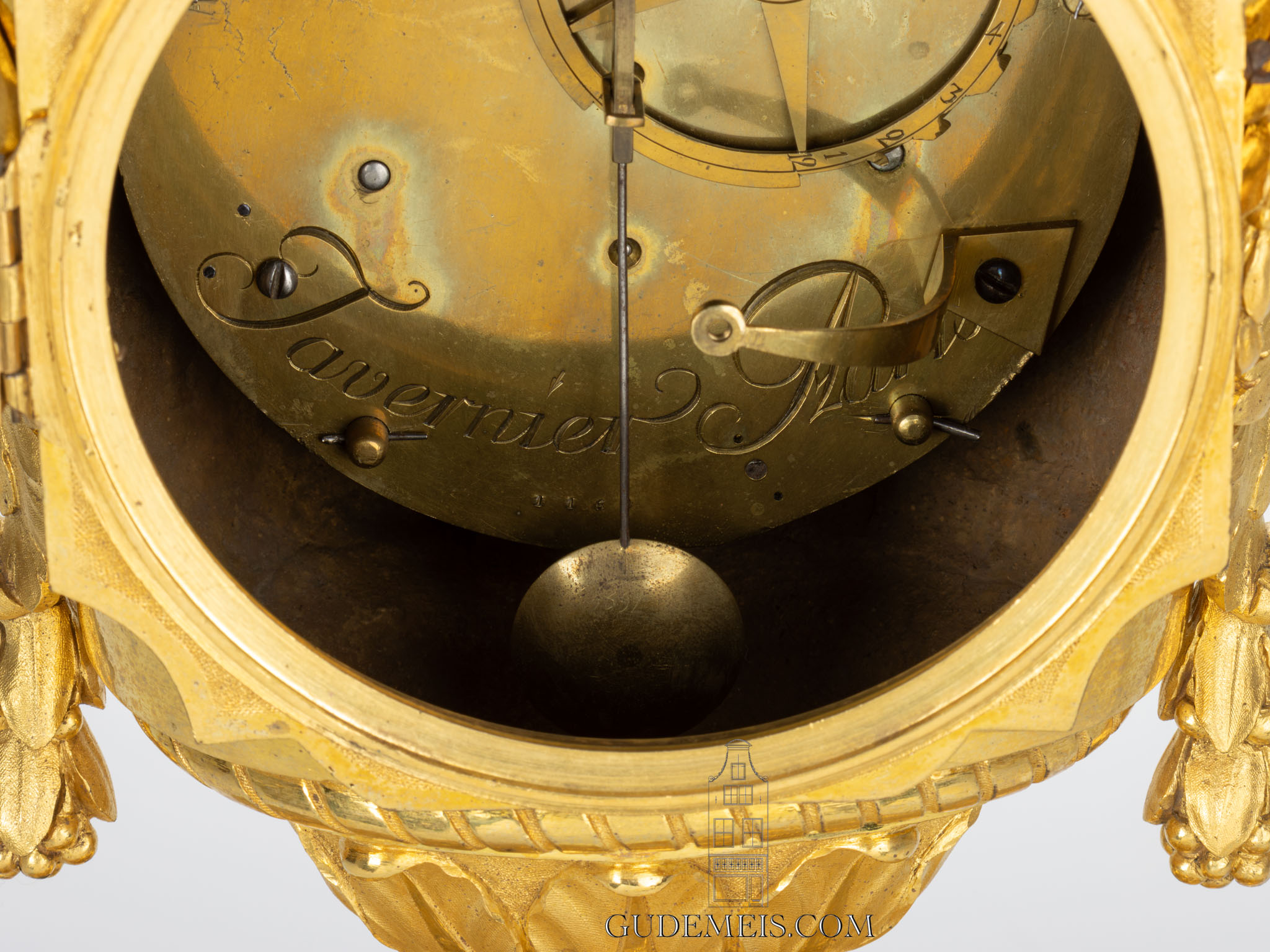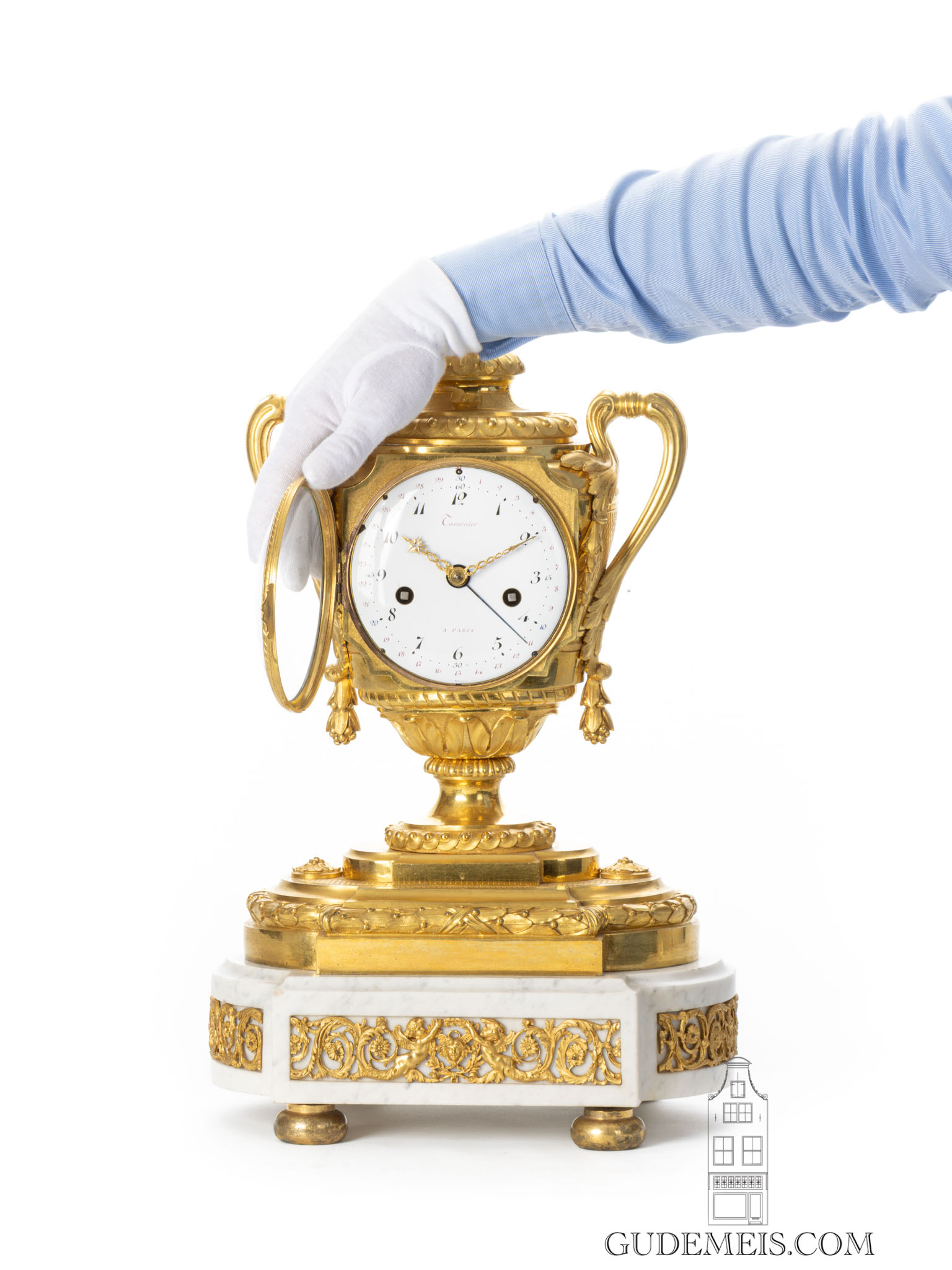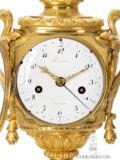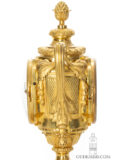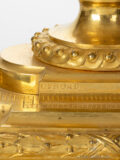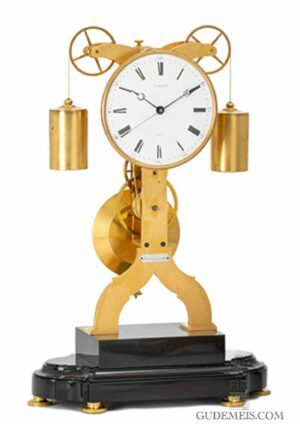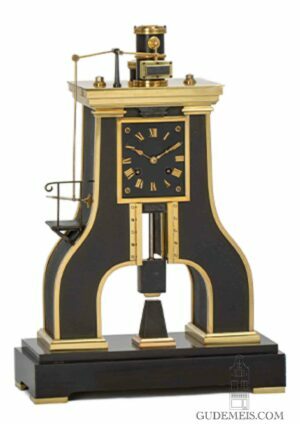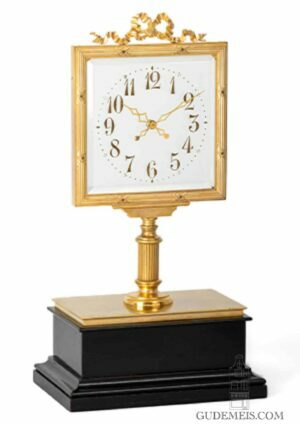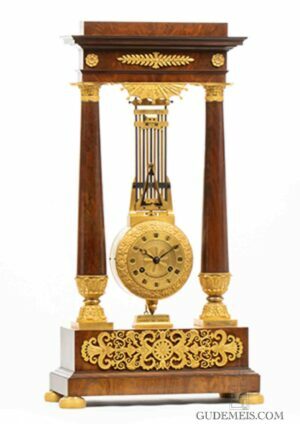A large French Louis XVI ormolu urn mantel clock by Osmond & Tavernier, circa 1770.
Description
Louis XVI
During the reign of Louis XVI (1774–1789), there was renewed admiration for the art of Classical Antiquity, partly due to the discovery of Pompeii. Because much less was known than is known today, Classicism was not a slavish imitation of Antiquity. It was more a combination and application of decorative elements from that period, and with those creating something new. Firstly, the shape of the vase is very fitting when we think of the many Greek vases known from Greek antiquity. In addition, the acanthus and laurel leaves, together with the openwork relief in the base, are inspired by antiquity and with that very characteristic of the Louis XVI period. Both the design and the quality of the bronzework are of a very high standard, which is not surprising as it was made by Robert Osmond. He is considered one of the best bronziers of this period and is also one of the few who signed his work. However, he was not responsible for the movement. That was supplied by Tavernier, who signed both the back plate and the beautiful dial. In this way, this clock is not only a fine example of the Louis XVI period, but also an illustration of the collaboration between craftsmen that led to the creation of beautiful objects.
Date indication
The 12-cm enamel dial has Arabic numerals for the hours. Around these is the minute indication with quarter hour numbering. On the outer rim are the numerals for the date indication in red. The signature Tavernier A Paris is also inscribed in red. The beautifully engraved and pierced hands are made of gilt brass, while the date hand is of blued steel.
Anchor escapement
The movement, which is identically signed and numbered 1169, is driven by two spring barrels and has a duration of at least eight days. It is regulated by an anchor escapement in combination with a pendulum suspended from a string. The clock strikes every half hour on a bell by means of a countwheel.
Osmond
The movement is fitted in an urn-shaped fire-gilt bronze case surmounted by a decorative finial consisting of berries and acanthus leaves. On the sides are beautifully shaped handles that end into acanthus leaves. The oval stepped base has a laurel leaves moulding and is signed OSMOND on the back. The whole stands on a white marble oval base with a classical pierced relief on the front and is raised on flat round feet.
